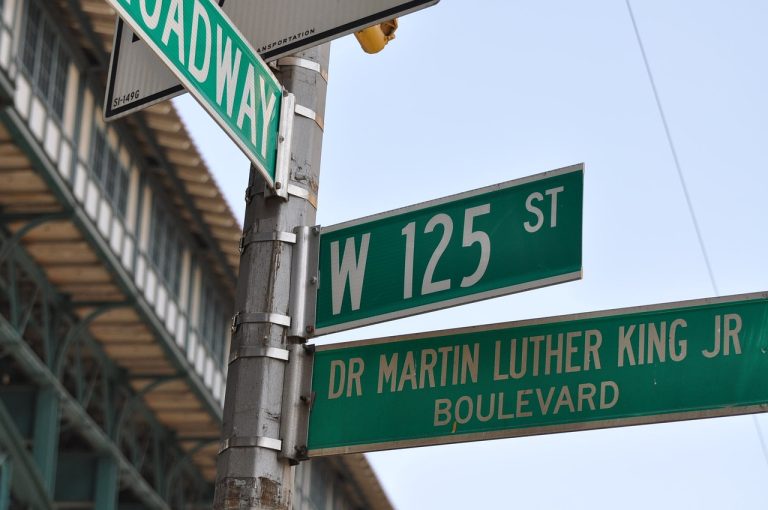The Ivy League is taking the A-train to Harlem after a court in 2010 upheld Columbia University’s plan to build a $6.3 billion satellite campus in the storied neighborhood. While many areas might welcome financial investment from an Ivy League outsider, Harlem residents fear it will irrevocably change the neighborhood’s special character, with gentrification squeezing out long-standing Black-owned businesses.
While Black businesses contribute greatly to the economy, they face daunting barriers that directly hinder their upward mobility – not least gentrification. This burden adds an additional layer of stress that Black business owners need to navigate while going against larger systems and corporations. Researchers describe gentrification as “affluent White populations revitalizing deteriorating neighborhoods and displacing lower-income ethnic/racial residents.”
Additionally, as wealthier individuals move into these areas, “the higher incomes result in rising properties that can lead to the displacement of existing residents,” and “a culture change that can occur, wherein the new tastes and preferences of wealthier residents can clash with the current culture and tastes.”
Other researchers assess that gentrification often occurs slowly, “rather than rapid displacement,” as “gentrification was associated with slower residential turnover among [disadvantaged] households.”
As Wanda Kolomyjec, a Justice Studies faculty member at Arizona State University noted, “one of the reasons gentrification occurs is because an area of the city becomes economically distressed, mostly from governmental policies which do not support the community, poor infrastructure, failing schools, increased police presence, and this affects the ability of businesses to be successful.”
She added: “Once this happens, a chain reaction begins affecting other businesses, and economic development declines, as do other services. At some point, developers see an opportunity to buy up property at discount rates and begin developing the area, increasing the value, but driving out the people who live there as government policy, not ironically, begins to support the area.”.
Overlap between Black businesses and fighting gentrification
The current situation in Harlem is emblematic of the uniqueness of Black history and the gentrification process that targets communities of color, with studies observing that “racially mixed neighborhoods, particularly those that are over 40% Black, appear most attractive to retail and residential investors and to middle-class White residents.”
The Save Harlem Movement is at the forefront against Columbia’s gentrification in Harlem that is pricing out Black and Brown residents. As the expansion continues, lower-income residents are pushed into outer boroughs and small businesses struggle to stay afloat.
“It is the embodiment of structural racism. When an area is distressed, there is usually a historical and policy-driven reason for it. The area is permitted to decline because the people who live there have little economic power,” Kolomyjec says.
Columbia University did not respond to multiple requests for comment.
Farhat Omar is a Master’s student and community activist involved in the Save Harlem Movement to protect the historic legacy of the Harlem district and its unique cultural heritage.
“In 2024, we see a major influx of young white professionals moving from the southwest and midwest, into New York in search of cheaper rent and neighborhoods, many of whom settle in Uptown Manhattan, particularly in Washington Heights and West Harlem,” Omar said. “This means further displacement, gentrification based on rising housing costs, and the loss of mom-and-pop businesses with additions of fast-food chains and franchises popping up in the neighborhood. This ‘process of modernization’ is actually an accelerant towards complete removal of the history, homes, and businesses that once helped the uptown community thrive.”
Omar emphasizes the importance of “fostering collaboration and partnership between government agencies, Black-owned businesses, nonprofits, collective action and grassroots groups and community members that have recently moved into the neighborhood,” to allow Black residents to leverage resources while simultaneously participating in their own economic and structural development.
Harlem’s history
Real estate mogul Philip A. Payton is revered as the “father” of Harlem. Payton positioned himself as the answer to fill the empty new brownstones in the district, bringing Black tenants from Midtown to new homes, helping transform the neighborhood into the Black Mecca, according to The New York Times.
In 1903, Payton incorporated the Afro-American Realty Company to help remake Harlem as a home for black citizens who faced discrimination in housing, eventually making Harlem the neighborhood with the largest concentration of Black people in the world, according to the National Museum of African American History and Culture. Harlem brought in scores of African Americans from different backgrounds and united them through their common experiences fighting racism and the legacy of slavery.
This migration of brilliant minds, poets, artists, dancers, and others, led to The Harlem Renaissance and the creation of a unique cultural identity within Harlem. And that’s what Omar and others are determined to protect.
Even though the gentrification process is still in the works and will take decades to be fully implemented, it will likely lead to increased job losses and displaced New Yorkers over that time, according to Omar.
Columbia’s Environmental Impact Statement recognizes the potential losses. It states the project “could result in the indirect displacement of some existing retail establishments in the immediate vicinity of the Project Area due to rent increases.” Additionally, the EIS statement states that the “stores that would be vulnerable to indirect displacement are not of substantial economic value to the City,” and can be moved elsewhere.
The University estimated that by 2030, the Proposed Actions could “directly displace 85 businesses and institutions (approximately 880 employees) that provide a variety of products and services and represent 12 economic sectors,” according to the EIS report. In the report, the University recognizes the 880 job losses but estimates additional jobs would come as a result of this Proposed Action.
Today’s relevance
The Defend Harlem group is actively fighting against gentrification through monthly meetings with state representatives to advocate for the removal of eminent domain in relation to their neighborhoods and focuses on researching the private development companies that claim ownership over the land.
The group is currently working towards developing a bill that will be presented to Governor Kathy Hochul, pulling back on the ability for Columbia and other private development companies to claim land, according to Omar.
Omar emphasizes the specific steps needed to curtail the gentrification process such as community ownership and access to participating in a stake-in decision-making process, giving Black and brown residents more of a say in the developments in their neighborhoods.
Additionally, Omar argues the need for more policy advocacy at the local, state and national levels, cultural preservation of neighborhoods, and additional education and awareness about the impacts of gentrification and displacement
“Community organizing and resistance is also central to empowering residents to advocate for their homes and their rights. Through collective action such as the @SaveHarlem group, grassroots organizing pushes back against displacement and highlights the wrongs of universities and companies such as Columbia,” Omar says.










